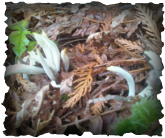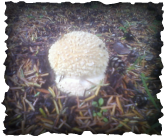Plantago Lanceolata, AKA Ribwort: I don't much care for any type of Plantain leaves, as nutritious as they are, at least not for eating; though they're at least as good for instant poultices as Curly or Yellow Dock and Dandelion leaves. Even in the early spring they are far too bitter for my taste, but in April and May, when the new flowering tops are out, I like to pick lots of those to sprinkle on my salads, and for omelettes and stir-frying. A small handful per serving is good. They're also reputed to be good for expelling some kinds of intestinal parasites. I can't vouch for that, but they're well worth eating, before the tops start to fuzz out into rings of tiny flowers. They're okay after that too, just not as tasty.
The seeds of all grasses are supposedly edible, as long as they are not fungally infected (beware of any black discoloration), although only a few of them are actually worth your time spent gathering and processing them. Collect them by bending the seedhead over into a bag and shaking them into it after they've turned yellow or brownish (mostly in late summer and early fall). They are a good source of nutrition that stores well for winter and should not be neglected by the serious forager. Also, certain types of tall grasses have tender, yummy inner parts just above each node ofthe stem that are good for trail snacking (mostly in late spring and early summer).
Also, it's good to know your Grasses from Sedges and Rushes. I learned a handy rhyme the other day which may prove useful: Sedges have Edges, Rushes are round, and Grasses have Nodes all the way to the ground. This rhyme refers to the shape of the stems. Sedges have triangular stems, while Rushes are more circular. |


 RSS Feed
RSS Feed